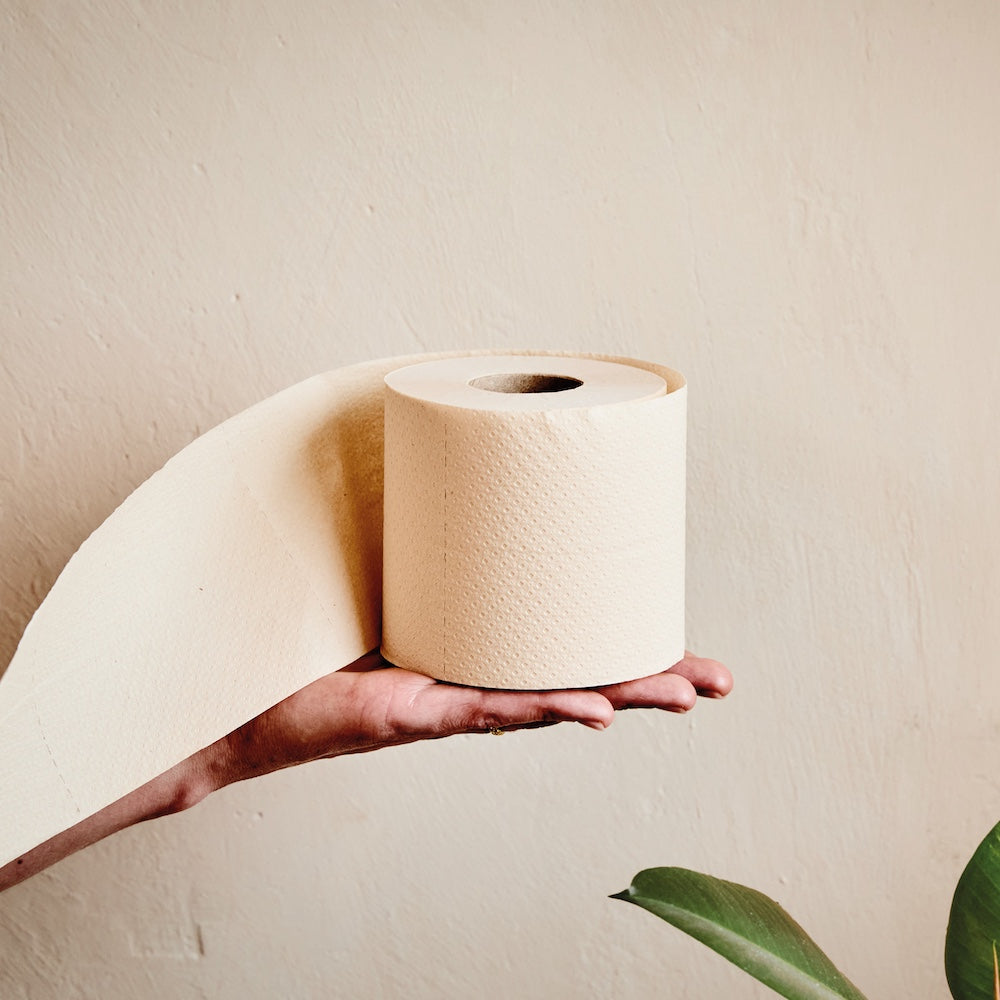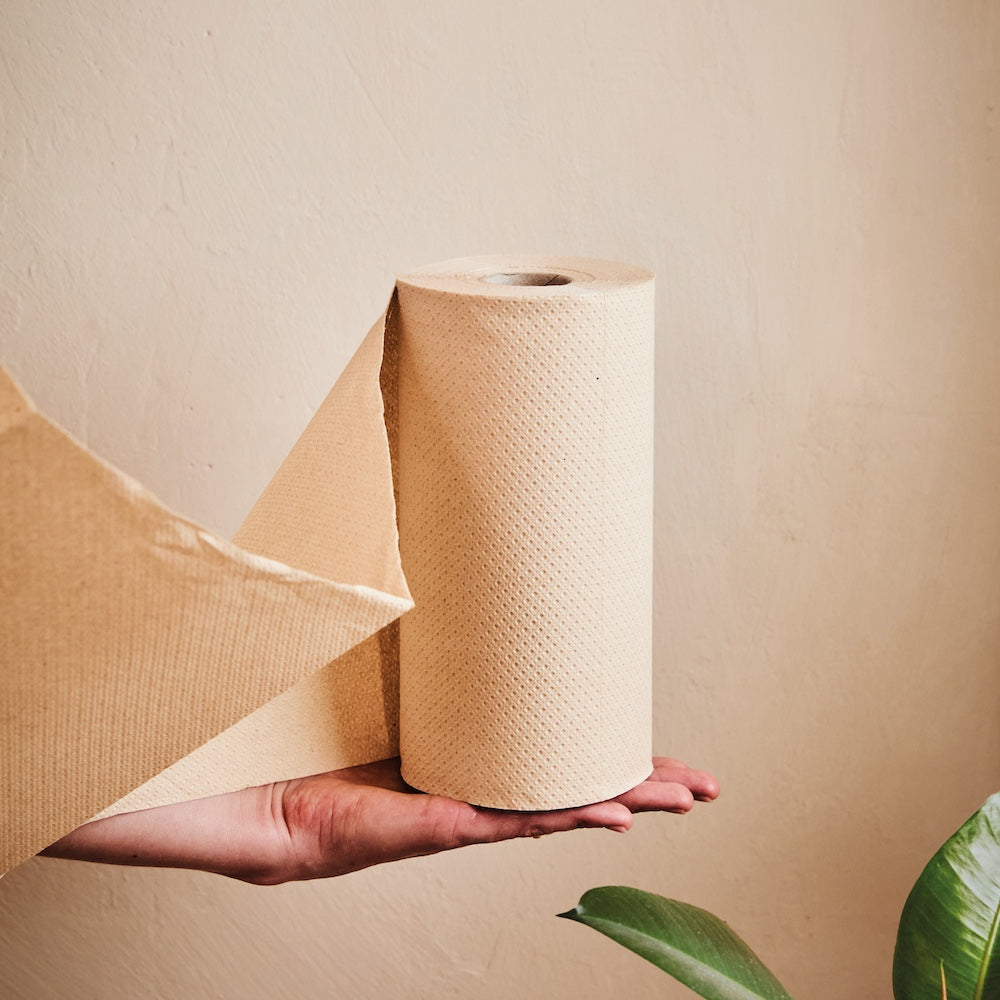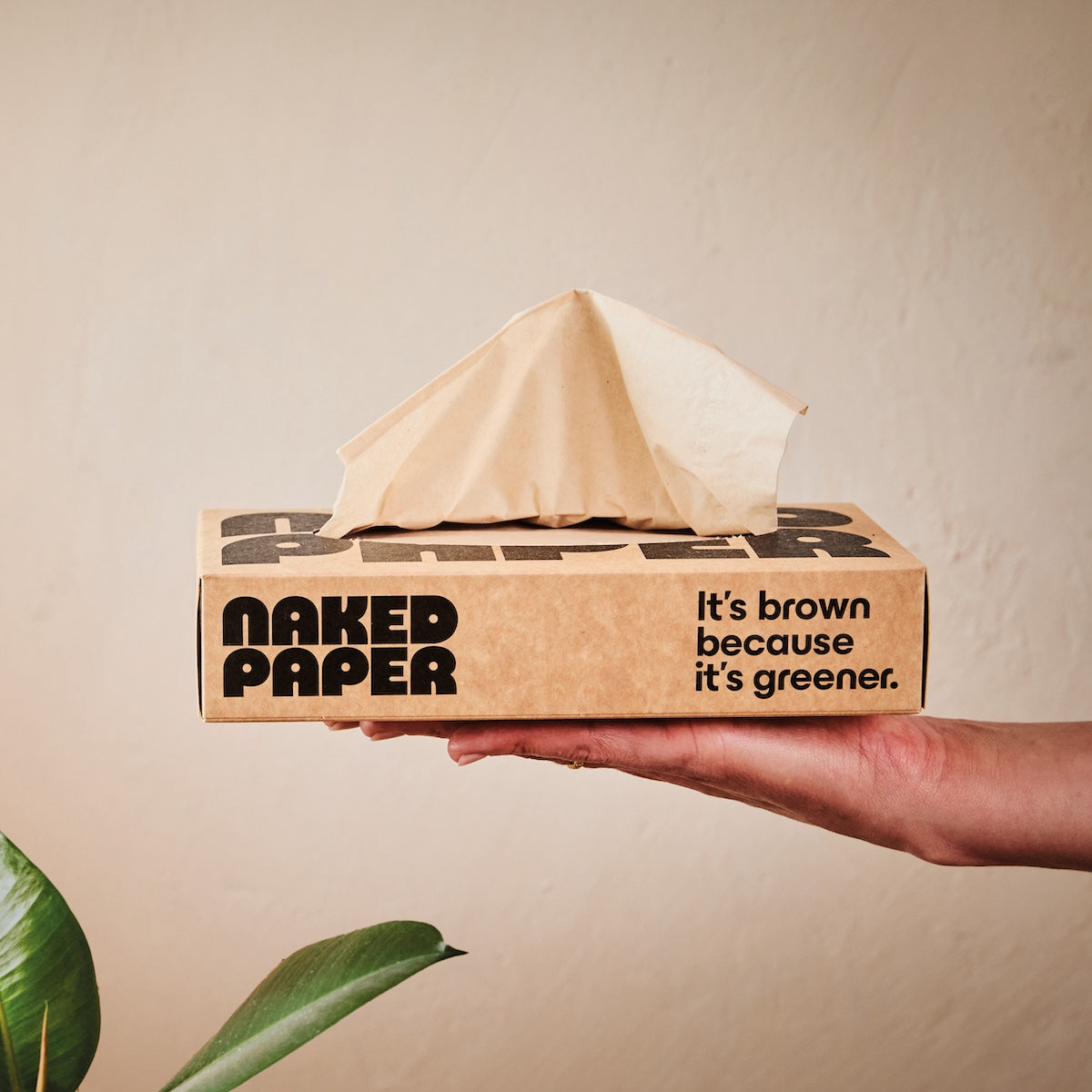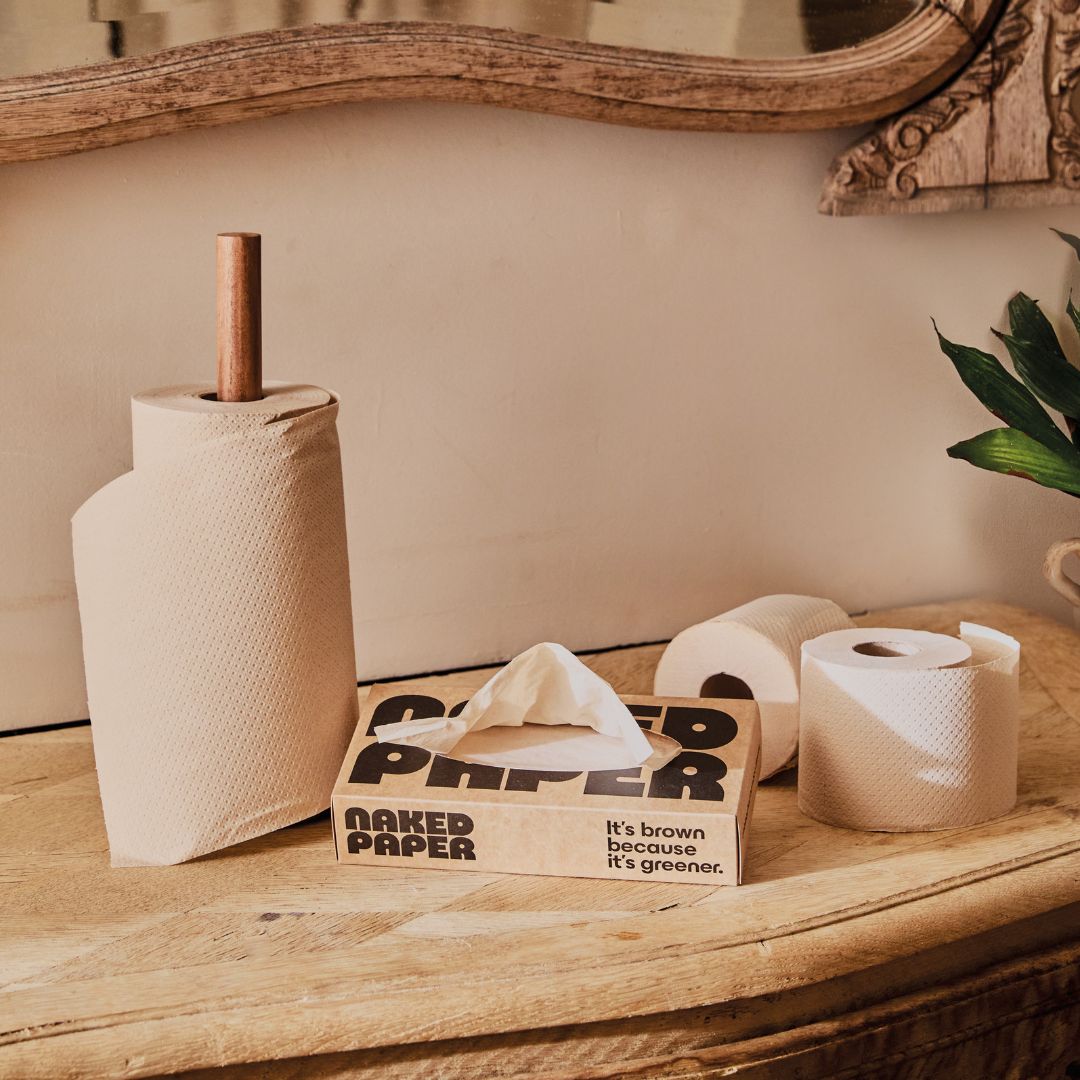The pros and cons of recycled toilet paper

Recycled toilet paper has long been a favourite among households trying to make more sustainable choices. It makes a lot of sense; from books to cardboard to office paper, the world is full of paper products that are no longer needed. Why not give some of it a second life; especially for something most of us use every day?
It’s a clever way to reduce waste and make use of what already exists, but it’s not always 100% compromise free. If you’re thinking of making the switch, it’s worth knowing the benefits as well as the potential bumps in the roll.

The pluses of recycled toilet paper
We’ll start with the pros. When it comes to toilet paper, there are some great advantages to taking a roll on the recycled side.
1. A smaller environmental footprint
The most obvious benefit of recycled toilet paper is that it avoids using virgin materials. Technically, recycled toilet paper (like any recycled paper product) will use a small amount of fresh pulp to make sure the final product is strong enough to use, but it’s far less than standard rolls.
That means less trees cut from natural forests, and less demand on timber plantations, while also ensuring less paper waste out there in the world. It’s a win-win.
This simple principle – reusing instead of harvesting – has a real impact, and our own life cycle assessment confirms it. Of the two tissue types we make at Naked Paper, our recycled toilet paper has the lowest emissions CO2e emissions overall, significantly low than our (already low CO2e) bamboo rolls.

2. Friendly to your drains
Recycled toilet paper tends to break down more quickly than products made from virgin fibres. The fibres are shorter and softer, and they dissolve faster in water. That’s especially helpful if you have a septic tank, compost loo, or older plumbing that’s more sensitive.
All of our toilet paper at Naked Paper is tested for dissolvability, so you don’t have to worry about clogs or surprises. But recycled paper tends to go the extra mile – breaking down a bit more readily and giving peace of mind to people whose systems are more on the sensitive side.

3. It’s cost effective
Because it uses waste material that would otherwise go to landfill or recycling centres, recycled toilet paper can often be made more affordably. As a toilet paper manufacturer, when we come to make our recycled rolls we aren’t competing for timber or specialist crops – we’re collecting something unwanted and putting it to good use.
At Naked Paper, we source our recycled raw materials from businesses around our factory. Cardboard boxes, packaging paper, and of course some of the seconds and offcuts from our bamboo rolls. As our collection processes have improved, we’ve been able to gather more material in each run – making our supply chain more efficient. The result? Lower costs, passed on to our customers.
That’s why our recycled toilet paper (and soon, recycled kitchen rolls and tissues too) is the most affordable part of our range. It’s practical, low impact, and great value.

The drawbacks of recycled toilet paper
Of course, nothing’s perfect – and recycled toilet paper does come with a few things worth noting, from perceptions to the materials used and how they’re processed.
1. The name puts people off
It’s a silly thing, but it crops up more often than you’d expect: Is recycled toilet paper made from used toilet paper?
The short answer – absolutely not. And we’re happy to speak on behalf of the industry, not just ourselves here. Different companies use different types and grades of paper as they make their recycled rolls (more on that coming up), but never anything that’s already been through the loo!
Still, the name can cause confusion. We’re sticking to calling ours “recycled toilet paper” because it’s the simplest name we can think of, but if you have any other ideas we’re all ears.

2. More processing (sometimes)
So recycled toilet paper isn’t made from second hand toilet paper, but that doesn’t mean there’s no need to think about what it is made from.
A lot of recycled toilet paper on the market is made using materials like receipts, brochures, and glossy office paper. These papers are often covered in ink and chemical coatings. To make them suitable for toilet paper, manufacturers bleach them aggressively – otherwise the final tissue would be an unappealing grey colour.
This bleaching process adds extra chemicals (as well as the packaging and energy used to make them) into the chain, adding to the impact on the environment. And the impact on your body is worth thinking about as well. Some of those source papers – especially receipts – can contain BPA, a man-made chemical that causes hormone disruption. It’s something we’ve written about before, and it's not something you want anywhere near your skin.
We’ve taken a different approach. At Naked Paper, we don’t use the kind of printed waste that needs to be bleached, or the type that contains BPA. Our recycled toilet paper is made from plain packaging card and unbleached boxes, so the final products come out a lovely shade of brown with no extra processing required.
The result is a bleach-free toilet paper that’s natural in colour and free from unnecessary additives. And yes – we have the lab tests to back it up; our recycled toilet paper contains no BPA and no PFAS or "forever chemicals".

3. The texture can be different
Recycled fibres are shorter and more fragile than virgin ones. They’ve already been pulped once, so they don’t have the same length or smoothness as fresh fibres. That can affect the texture of the finished roll.
Some people notice the difference, others don’t. But it’s fair to say that recycled toilet paper may feel slightly less silky than bamboo or virgin wood rolls.
So at Naked Paper we’ve been working hard to overcome the difference in softness between our two paper types. In the two years since we started producing recycled rolls at Naked Paper, we’ve refined our processes repeatedly to get the softest finish without compromising their superpower; how sustainable they are.
We’ve changed the pulping times, altered the temperature of our sap-based adhesives, and made other tweaks all through the process. And we’re delighted to say it’s working. Don’t just take our word for it; here’s what Fiona, one of our lovely customers, wrote to us in June 2025:
“I just wanted to say how much I like the new recycled loo roll. It’s lovely and soft and a pleasure to use.”
That’s what we like to hear.

Naked Paper: recycled toilet paper perfected
Recycled toilet paper is a practical, planet-friendly choice, but it can come with some trade-offs. It may not be quite as smooth as other rolls, and the recycled material needs to be selected carefully to avoid nasty chemicals catching a lift from previous uses. But when made well – with the right ingredients – it’s a reliable, affordable product that’s gentle on your body and the environment too.
At Naked Paper, we’re bringing you the benefits of recycled toilet paper without the drawbacks. Soft, sustainable toilet paper that looks great, feels great, and is made with care.
Want to give it a try?
Recent blog posts
-
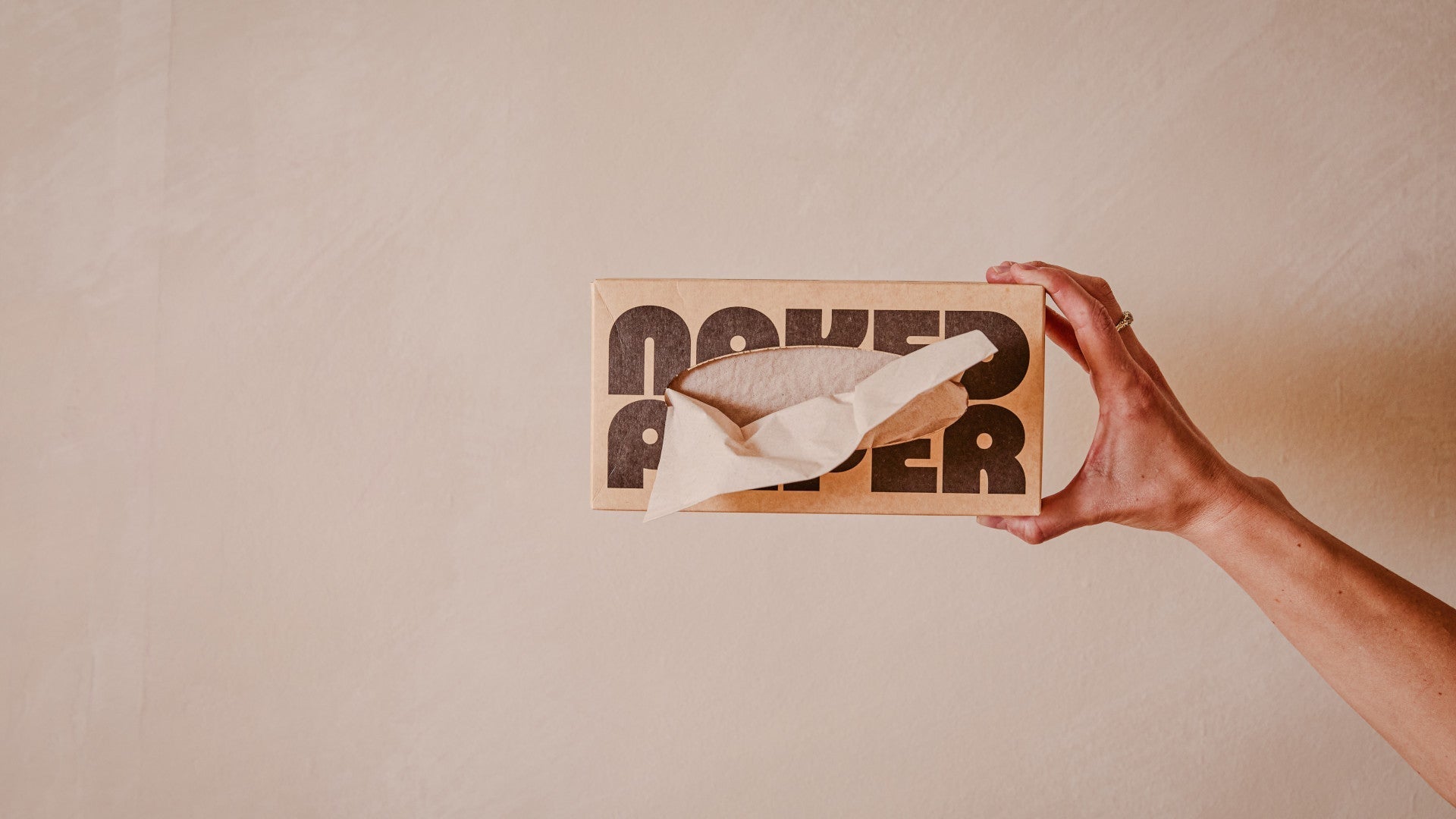
Do people still use handkerchiefs? A short history of blowing our noses
Have you ever paused mid-sneeze and pondered the history of the tissue or hankie you're about to use? Probably not, and who could blame you? But the humble handkerchief and its modern-day cousin, the disposable tissue, have a surprisingly interesting...
-
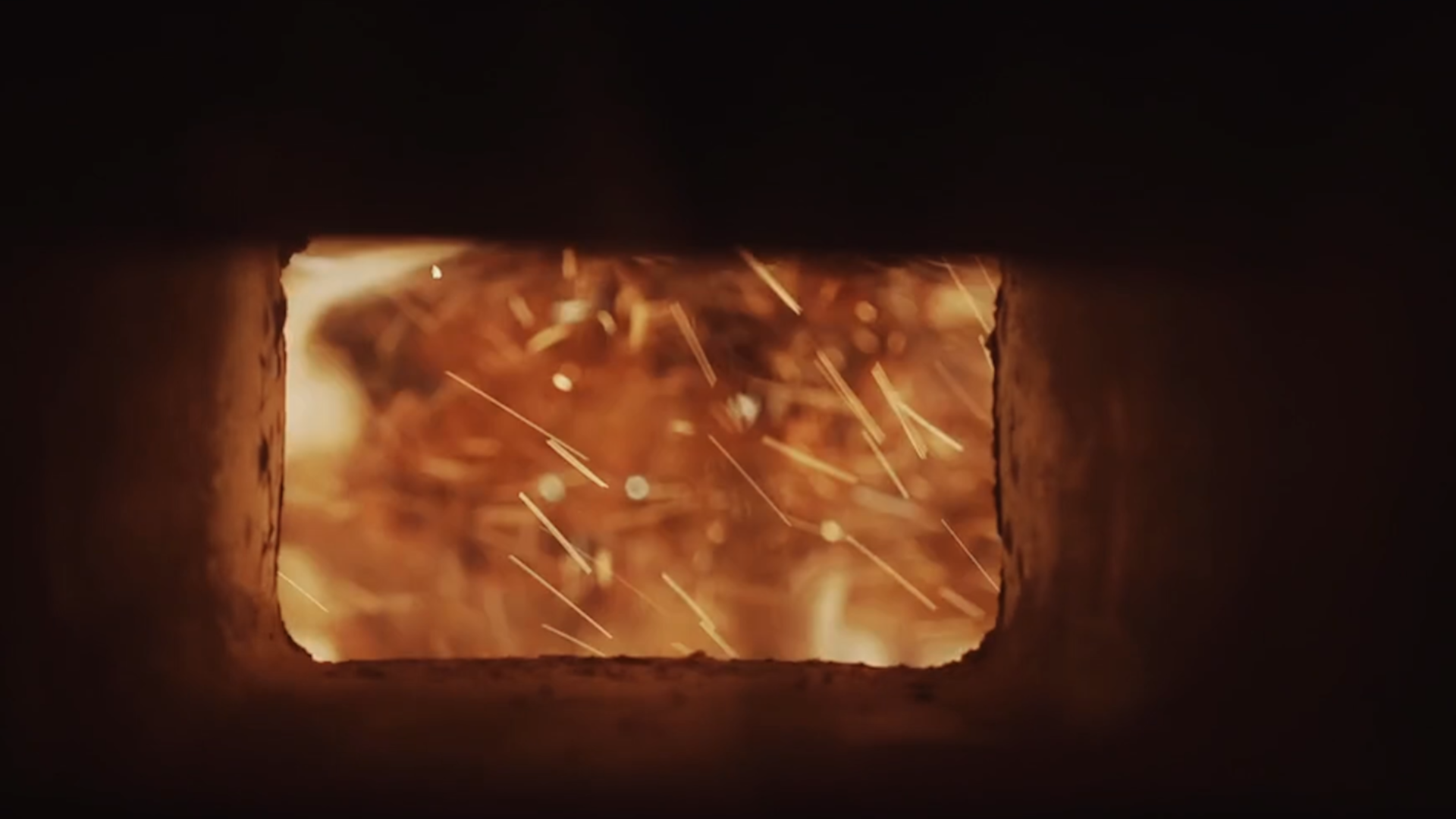
Main character energy: eco toilet paper needs eco heat
Let’s talk about heat. Not the “pop the kettle on” kind (though we’re big fans of that too) but serious, furnace-level heat. Enough heat to turn soggy bamboo and recycled cardboard pulp into soft, strong toilet paper. Heat is the main...
-

Naked Paper gets a perfect score from The GOOD Shopping Guide
Getting outside approval from trusted experts is really important for sustainable businesses, even when you're making products as simple as bleach free toilet paper. It’s easy enough to talk a big talk on doing better and use words like “eco” and...
